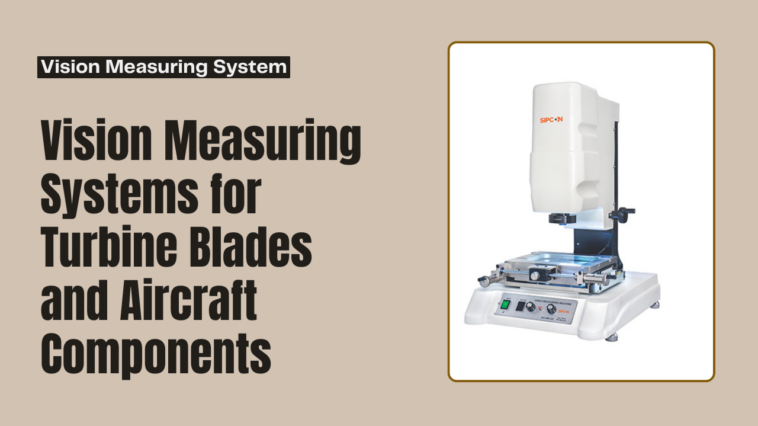Precision engineering is an essential requirement of the aerospace market, where marginal measurement error compromises safety and function. Amongst the best technology for accuracy maintenance in this arena is the Vision Measuring System. Such superior systems are significantly used for the examination of turbine blades and other aerial parts to keep up with robust industry requirements.
Understanding Vision Measuring Systems
A Vision Measuring System is a high-tech optical instrument used to measure complex parts non-contactingly. With powerful cameras, intelligent software, and precise optics combined, these systems can collect highly accurate data from complicated surfaces. They are especially important in industries such as aerospace, where dimensional accuracy is critical.
How Vision Measuring Systems Work
Vision measuring systems employ cameras with high-resolution lenses to digitize an object. The system’s software is used to inspect the data and compute accurate measurements, angles, and tolerances. Contemporary systems usually interface with CAD programs to contrast measurements with initial design specifications.
The Role of Vision Measuring Systems in Aerospace Component Inspection
1. Turbine Blade Inspection
Turbine blades are very important parts of aircraft engines, and performance, longevity, and safety all depend greatly on accuracy. A Vision Inspection System can accurately inspect turbine blades for:
-
Blade Profile Accuracy: Verifying the curve and airfoil shape conform to design specifications.
-
Root and Tip Dimensions: Checking critical dimensions for correct blade mounting.
-
Surface Defects and Imperfections: The presence of burrs, cracks, or surface irregularities that could weaken performance.
2. Aircraft Fasteners and Connectors
Aircraft hardware, rivets, and minute parts need exact inspection to ensure structural integrity. Vision Inspection System is best suited for detecting defects like under-threading, wrong size, or damage on the surface.
3. Structural Panels and Frames
Vision Inspection Systems are applied to measure large-scale structural frames and panels to verify:
-
Precise fastener hole location.
-
Even surface finishes for drag reduction.
-
Uniformity of panel thickness in terms of weight control and aerodynamic capability.
4. Landing Gear Components
Landing gear components like axles, struts, and wheel assemblies experience tremendous force and pressure when planes take off and land. Vision Measuring Systems make sure that every component is of exact specifications to support these stresses.
Advantages of Using Vision Measuring Systems in Aerospace
1. Non-Contact Measurement for Delicate Parts
Aerospace parts tend to be thin and fragile. Vision Measuring Systems provide the option of non-contact measurement, thereby reducing the chances of part damage during inspection.
2. High Precision for Complex Shapes
Aircraft components and turbine blades have very complicated shapes with close tolerances. Vision Measuring Systems are particularly good at measuring such complex geometries with very high accuracy.
3. Faster Inspection Process
Unlike traditional measurement techniques, the Vision Inspection System offers quick scanning and analysis of data, furthering productivity and minimizing downtime.
4. Integration with CAD Models
By registering scanned data on CAD designs, engineers can easily detect deviations from initial specifications, enhancing quality control procedures.
5. Improved Data Documentation
Vision Measuring Systems provides reports of high-detail content to ensure high-quality records for traceability and aerospace regulations compliance.
Choosing the Right Vision Measuring System for Aerospace Applications
When choosing a Vision Measuring System to inspect aircraft parts and turbine blades, take the following into account:
-
Resolution and Accuracy: Select systems with high-resolution cameras for accurate and detailed inspection outputs.
-
Software Capabilities: More sophisticated systems with CAD support and data visualization capabilities enhance productivity.
-
Flexibility: Systems that can handle different part sizes and shapes provide better adaptability in aerospace engineering.
Conclusion
The aerospace sector requires accurate inspection solutions to guarantee critical components such as turbine blades and aircraft structures meet safety and performance requirements. Vision Measuring Systems and Vision Inspection Systems offer the accuracy, throughput, and consistency needed for demanding applications.
Advanced measurement systems from Sipcon are developed with the high level of quality control required in the aerospace manufacturing business to ensure the best performance and better product reliability.
This post was created with our nice and easy submission form. Create your post!





